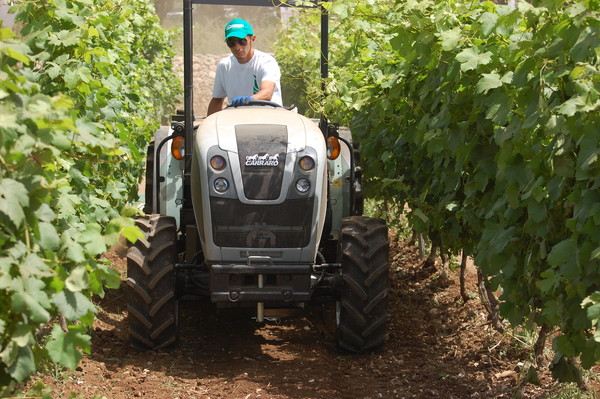
European Union regulation on narrow track tractors: efficient and sustainable
The European Parliament has approved emission standards for engines used in new non-road mobile machinery, NRMM. The norm sets severe parameters for safeguarding the environment but acknowledges the specifics of vineyard and fruit orchard tractors to allow them to move from the current Stage IIIB to Stage V in 2021 to give manufacturers more time to design solutions for the installation of after-treatment systems compatible with the size of the engine without altering operational requirements of these tractors
The European Parliament has approved emission standards for engines used in new non-road mobile machinery, NRMM. The norm sets severe parameters for safeguarding the environment but acknowledges the specifics of vineyard and fruit orchard tractors to allow them to move from the current Stage IIIB to Stage V in 2021 to give manufacturers more time to design solutions for the installation of after-treatment systems compatible with the size of the engine without altering operational requirements of these tractors
The complicated issue of narrow track tractors has been solved for the Italian industries. The European Parliament, definitively and with a very wide majority, approved a new regulation for emission standards for the non-road machinery category of specialized tractors for vineyards and fruit orchards, called narrow track tractors.
The new norm worked out through complex negotiations involving the European Commission and Council stipulates emissions limits and a fairly tight schedule for compliance for many NRMM categories in use and enacts the request supported by European and Italian agricultural machinery manufacturers for an ad hoc regulation to apply to specialized tractors.
A key role in bringing in the norm was played by MEP Elisabetta Gardini, a member of ENVI, the Committee on the Environment, Public Health and Food Safety, and rapporteur for handling the regulation which takes into account the objective difficulties involved in equipping specialized tractor engines with large after-treatment systems and at the same time continue to meet the operational requirements in terms of size and maneuverability that represent the fundamental design specifications for these machines.
As regards the timetable established for narrow track tractors, the norm will allow compliance of these machines with the Stage III B emission standard until 2021 to then follow a direct move for them to compliance with Stage V.
Manlio Martilli, the president of Assotrattori representing tractor manufacturers in the Italian Agricultural Machinery Manufacturers Federation, FederUnacoma, commented, “This solution makes it possible to skip the intermediate step (Phase IV) which would have forced the Italian manufacturing industries to redesign their machines for a very short period and then apply a new change after 2021.” He also affirmed that this was “the right option for the Italian industry with their narrow track tractors, products of excellence, and is aimed at reconciling compliance with the norms and the needs of farmers requiring maximum functionality of their machinery.”
The new regulation introduces stringent parameters for safeguarding the environment and is applied not only to specialized tractors but in general to a wide range of engines for construction machines, generator sets, rail and inland water engines on down to agricultural machinery as the most significant categories of engines included in NRMM.
MEP Elisabetta Gardini said, “We have tightened the limits proposed by the Commission for many ranges of power but have maintained a fairly reasonable approach to allow industry, and especially small enterprise, the backbone of our economy, for adapting to the new regulatory framework in a short time without impossible requirements to respect; this was the most important objective.”
Another positive evaluation was delivered by the European agricultural machinery industries in CEMA which, with Assotrattori and FederUnacoma and the backing of the European professional farmers’ organization, COPA-COGECA, worked hard to gain recognition of the unique and special nature of narrow track tractor requirements.
FederUnacoma President Massimo Goldoni declared, “The new regulation raises the European industry to the top for the control of emissions in that beginning in 2019 the continent will have the most severs limits in the world. Thanks to the work done by MEP Gardini and other Italian MEPs like the chairman of the ENVI Committee, Giovanni La Via, account is taken of the industrial economy and research and innovation methodologies which have an important priority role in a sector like ours but have precise timetables for planning and development.”








